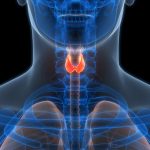There are approximately 650 skeletal muscles in the human body, and they all need protein to thrive and function. Older adults have some special considerations in this regard.
Why is protein so important?
Protein is a macronutrient made up of structural components called amino acids, more commonly known as the building blocks of protein. Life cannot be sustained without protein. Protein is needed for healing wounds, strengthening the immune system, and maintaining whole-body fat free mass. It is also necessary for movement and function in everyday activities.
Protein is present in every cell of the body; the blood, organs, bones, heart and muscles. Most people think of protein only in the context of their muscles. Muscles are made almost entirely of protein, hence, the need to feed the muscles when they have been trained. When muscles are used, they immediately go into a post-workout state known as a catabolism. The processes of catabolism (breakdown) and synthesis (rebuilding) are constantly going on in the body depending on whether the person is sedentary or very active. Catabolism occurs immediately after workouts, so replenishment of protein is needed within one hour to help rebuild muscles so they do not continue to catabolize.
The musculoskeletal connection
Muscle strength helps maintain balance, prevent falls and can possibly help strengthen bones by the action of resistance training. Strengthening of bones is needed to prevent or slow down development of osteoporosis, a condition that can lead to fracture falls and disability.
A related concern for older adults is sarcopenia, an age-related loss of muscle mass, strength and function. The average adult can lose up to 30% muscle mass from age 60 to 80. According to Dryer et al and Roubenoff et al, approximately 15% of people ages 65 to 75 and 50% over age 85 will require help with the activities of daily living such as dressing, eating, cooking and walking due to loss of muscle.1,1A The depletion of total muscle mass in the absence of other disease is the cause of death in starvation. If a person already has very poor muscle reserves from illness or age, the likelihood of survival is poor under newly added stress such as burn injury, cancer or other physiological trauma. According to Fujita et al, aging is associated with changes in the muscle protein metabolism response to ingesting a meal, and is likely due to the response to endogenous hormones.2A However, the older muscle is still able to respond to amino acids, mainly the essential amino acids and branch chain amino acids (BCAAs), which have been shown to acutely stimulate muscle protein synthesis in older individuals.
Protein intake
It is assumed most Americans eat more protein than they may need. Of course, this may be the case in general, but in the older population muscle mass decreases steadily after age 60. There are many theories regarding the cause, however. Many speculate that decreases in growth hormones, general lifestyle changes and/or changes in metabolism and nutritional intake may be the primary contributors. What is known is that adults who have less-than-ideal lifestyles such as poor eating habits, little or no exercise, smoking, high stress environments, etc. are at even greater risk of losing muscle mass and gaining more whole body fat than someone that is active and working at strength training and other forms of physical activity.
Protein ingestion must be a part of the older adult’s diet, especially if he or she is physically active and/or fitness training. According to Recommended Dietary Allowances (RDA), the typical protein needs of an average adult are 0.8 g per Kg of weight just to maintain protein homeostasis in the body. Unfortunately, there are few studies that have really defined specific amounts of protein needed by the older adult or the older adult who fitness trains.
References
1. Dreyer HC, Volpi E; Role of protein and amino acids in the pathophysiology and treatment of sarcopenia. J Am Coll Nutr 24:140S-145S, 2005.
1A. Roubenoff R, Hughes VA: Sarcopenia; current concepts. J Gerontol Biol Sci Med Sci 55:M716-M724, 2000.
2. Campbell WW, Barton ML, Jr, Cyr-Campbell D, Davey SL, Beard JL, Parise G, Evans WJ; Effects of an omnivorous diet compared with a lactoovovegetarian diet on resistance-training-induced changes in body composition and skeletal muscle in older men. AM J Clin Nutr 70:1032-1039, 1999.
2A. Fujita S, Volpi E: Amino acids and muscle loss with aging. J. Nutr. January 2006 vol. 136 no. 1 277S-280S.
3. Motil KJ, Mathews DE, Bier DM, Burke JF, Munroe HN, Young VR. Whole-body leucine and lysine metabolism: response to dietary protein intake in young men. Am J Physiol Endocrinol Metlab 1981;240:E712-21.
4. Heymsfield, SB; Gallagher, D; Kotler, DP; Wang, Z; Allison, DB; Heshka, S (2002). “Body-size dependence of resting energy expenditure can be attributed to nonenergetic homogeneity of fat-free mass”. American Journal of Physiology – Endocrinology and Metabolism 282 (1): E132-E138. PMID 11739093. .
About the Author
Chiffon Okuda is a graduate of Muhlenburg School of Nursing in Plainfield, NJ, and holds a BAAS from the University of North Texas in Health Promotion and Community Services. She has been a registered nurse for over 20 years, specializing in the older adult and currently works for a large public hospital as a geriatric case Manager. She is an NFPT-certified personal trainer, fitness nutrition specialist, and a SECA (Strength, Endurance,Combat, Agility) Senior Group Kettlebell Instructor, holding classes at a local recreation center as well as providing private personal training.
View the Author’s Profile and other articles published in Personal Trainer Today.






